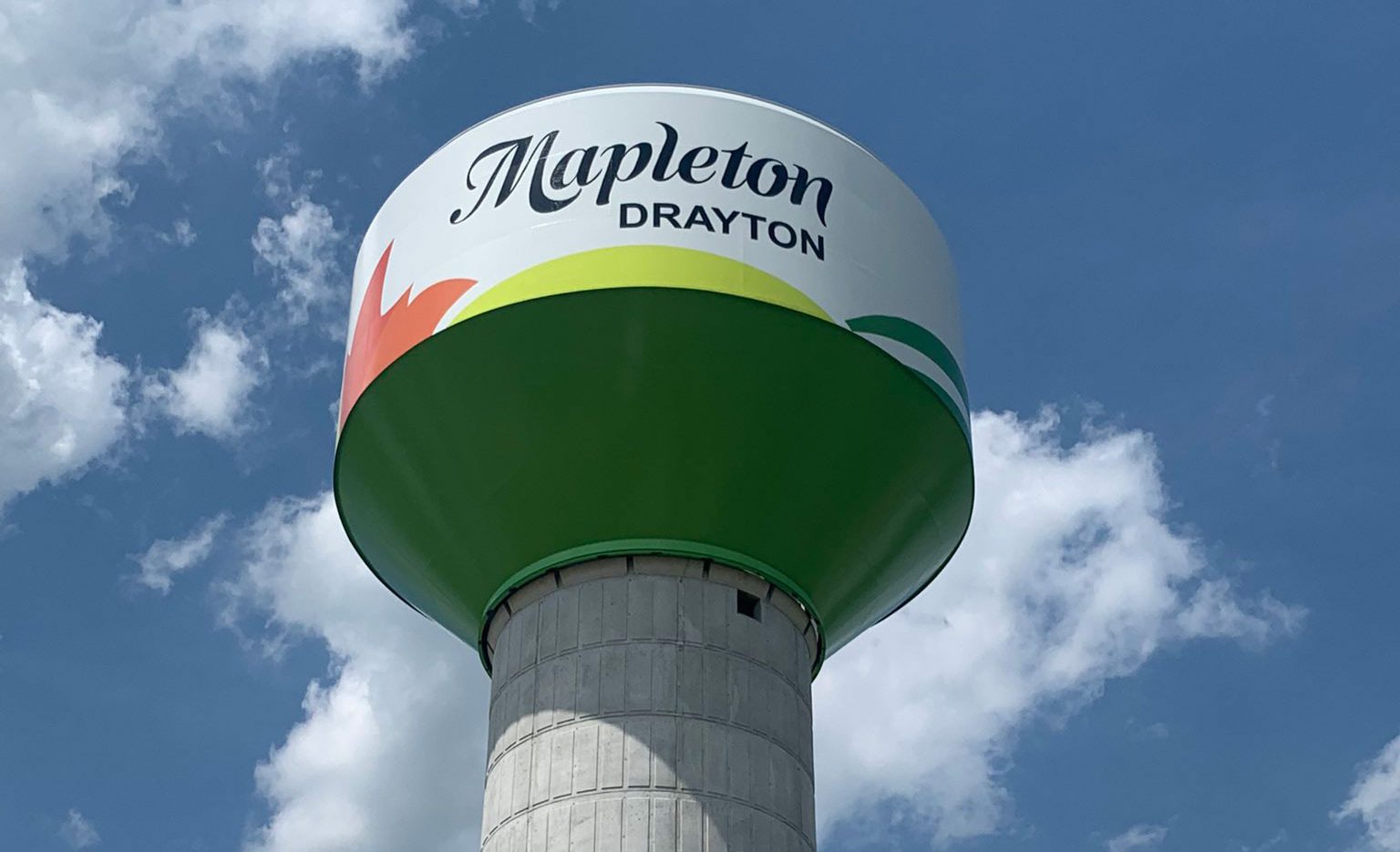MAPLETON – Upgrades to water and wastewater infrastructure in Mapleton are estimated to cost $41,327,576.
That’s according to Graham Capital, the development lead, financial advisor, general contractor and pre-construction lead for the bundled water and wastewater upgrades.
Cima is the design lead for the upgrades, and Ontario Clean Water Agency (OCWA) is the operations and maintenance provider.
The upgrades include:
- pumphouse and standpipe upgrades to Moorefield’s water system, estimated to cost $6,327,154;
- decommissioning the existing Drayton sewage pumping station and constructing a new facility at the end of Queen Street, estimated to cost $12,919,277;
- upgrading Mapleton’s wastewater treatment plant to expand capacity from 900 to 1,300 square metres per day, estimated to cost $18,521,145; and
- smaller projects, including extending water and sewer distribution on Wellington Street South and Main Street and upgrading the wastewater pumping system in Moorefield, estimated to cost a total of $3,560,000.
The township previously estimated that the bundled projects would cost $25 million.
When asked about the increase, Mapleton finance director Patrick Kelly told the Community News, “As a substantial infrastructure investment is advanced through development, the scope of work becomes more clear, and both cost and schedule estimates become more precise.
“The existing $41.5 million estimate includes an estimating contingency figure of 20 per cent,” he noted.
“The cost estimates will continue to be refined …. and staff are optimistic that the overall capital outlays will come down,” but “we do not expect them to come down as low as originally projected.”
Kelly described the discrepancy between the initial estimate of $25 million and the updated estimate of over $40 million to be “within the range of what would be expected for a project of this magnitude, and consistent with estimates noted elsewhere in the industry.”
Kelly also noted the township is “still hopeful … senior levels of government will see merit in our outstanding funding applications, which would help to offset the eventual long-term debt requirement.
Graham Capital director of development Sam Johnson said the company’s goal has been to find “an efficient way to finance these upgrades and construct them and get them into service so that that’s not a constraint to community growth.”
Johnson noted the listed estimates are “not committed pricing or anything at this point in time. This is what we think the program of work is going to cost the township, if they implement it within a 2025 to 2027 construction window. “
Graham Capital has advised Mapleton to establish a municipal services corporation (MSC), describing it as “the most cost effective way to go.
“The MSC is a tool that the township can use to put yourself in an economical, sustainable utilities-pay-for-utilities structure,” Johnson said.
Setting up an MSC includes business plan development, a public advertising period and legal work.
“It is not a privatization style structure,” he noted, and it will be governed by the township, with the option to include Cima, OCWA, and/or Graham Capital for advisory services.
Johnson said another strategy Graham Capital is using to reduce costs is utilizing grants, reserve funds and development charges.
“You’ve been doing a good job at running your utility in the black for a number of years now. That’s a strong tool for the township to be able to use – to make sure that you don’t need to have rate shocks for consumers,” he said.
“Similarly, the development charges that you are projecting to receive … serve as another lever that we can pull to reduce the immediate impacts of needing to finance a big infrastructure program and make sure that is phased in gradually over time to reduce any rate shocks.”
To cover the $41-million price tag, Graham Capital recommends the township increase utility rates by at least 3% per year for about 12 years (in addition to an annual 2% inflation rider).
If grant funding does not come through, Johnson noted this recommended annual increase would go up to 5.5%.
To pay for the upgrades in the meantime, Graham Capital recommended financing with a 40-year repayment period.
“The advantage of a longer term is that you get a lower rate impact phased in over a longer period of time,” Johnson said.
He noted another option is to structure it as a 30-year debt, which would “slightly change some of the rate impacts over time.”




